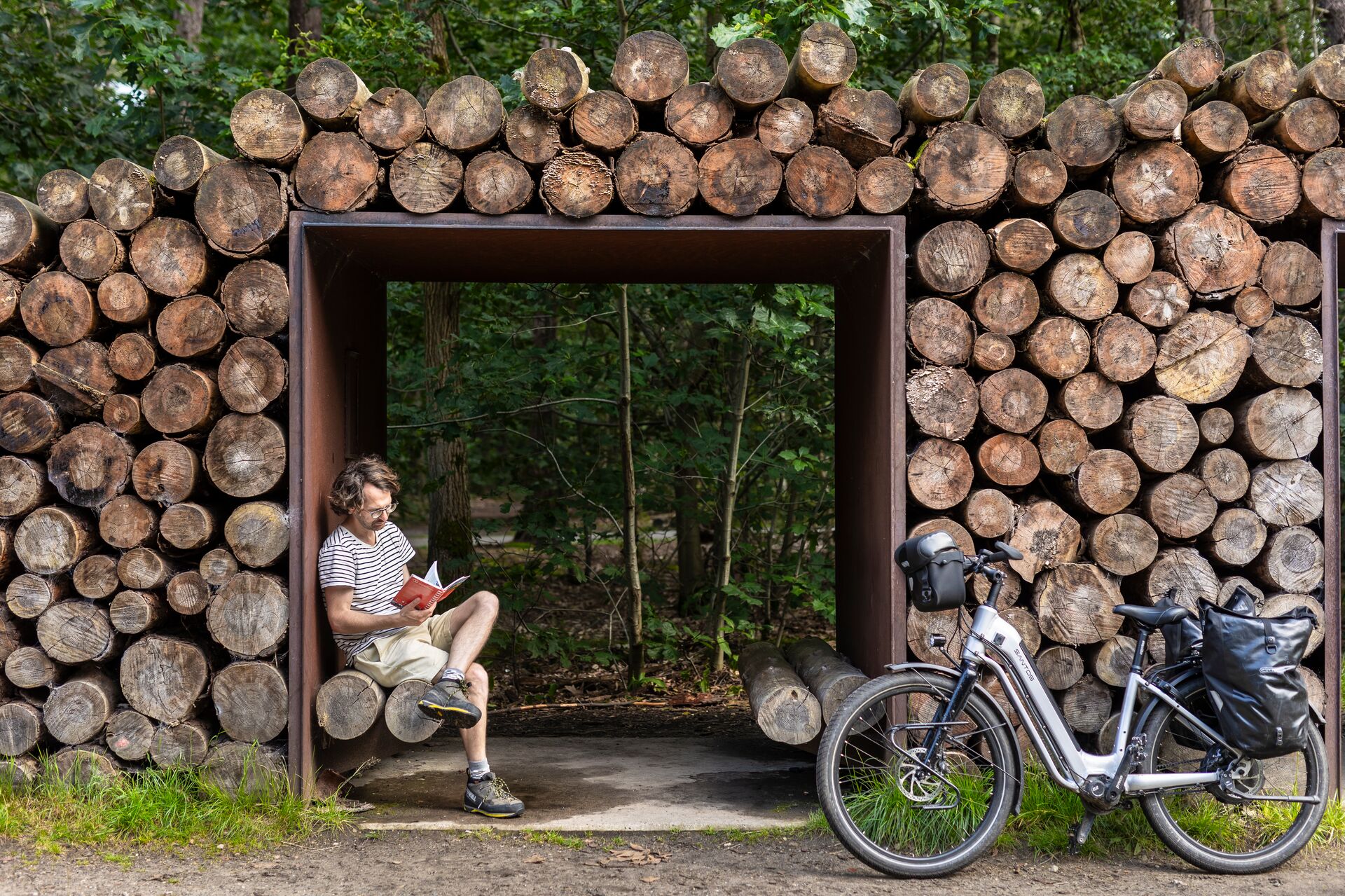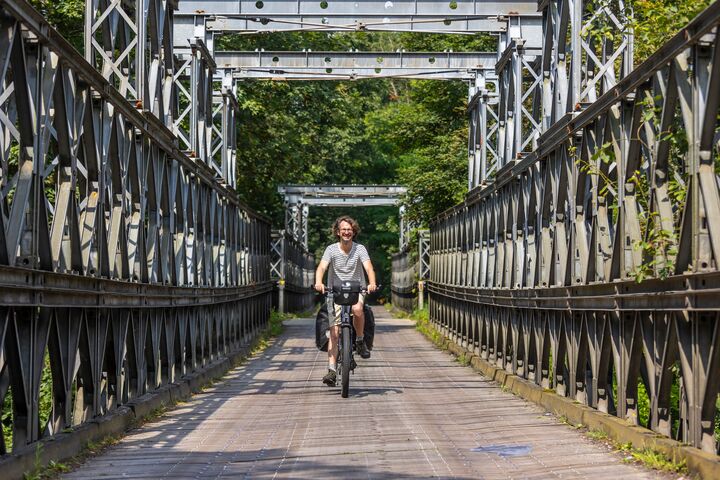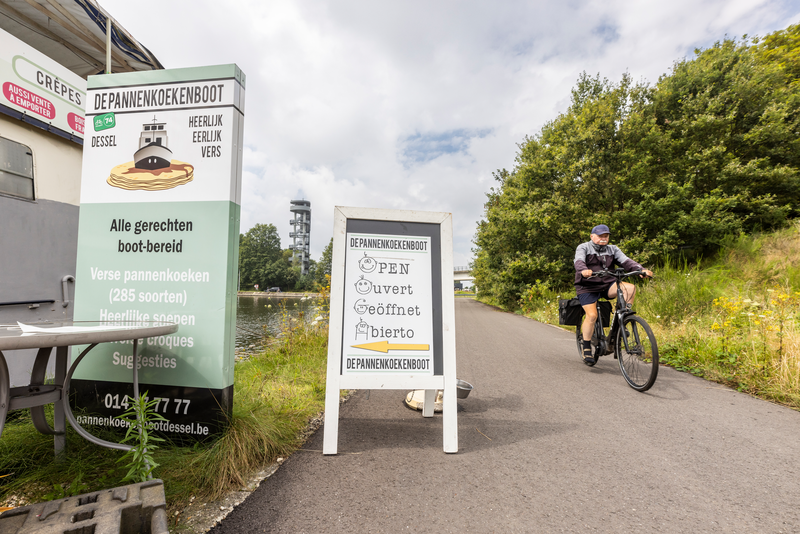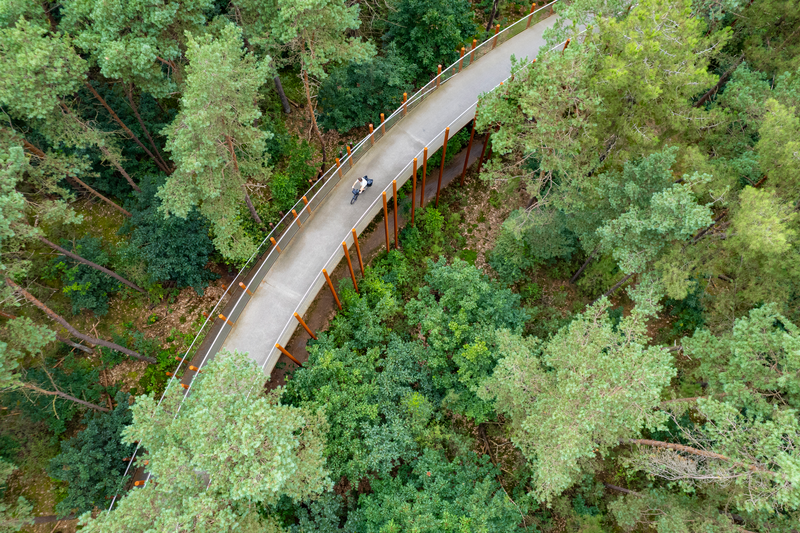Day 2: Lille - Houthalen

- Lille - Houthalen, 106 kilometres. (65.8 miles)
- Iconic cycle route: Kempen Route
- Accommodation: Hotel de Boskar in Houthalen
The next morning begins with a splash too, but this time an unwelcome one. A heavy autumn shower has intruded into the Kempen high summer. We cycle our longest stage today: 108 kilometres (67 miles), towards Houthalen, which takes us through the Valley of the Kleine Nete. At the Bochelt-Herentals canal, we enjoy an early lunch on a pancake boat, the jetty creaking under my feet as I board. Behind the boat is the Sas 4 Tower Dessel, overlooking the region and the first terrils; man-made mountains formed from rubble and stone extracted from the now-closed mines. We follow the towpath along the canal for many kilometres, sea thrift flowers bloom in the fields. We turn off towards National Park Bosland, an uninterrupted area of heathland, fens and mixed forests. There we find the attraction Cycling through the Trees. Over a bridge, a path seven hundred metres long takes us on an upward spiral via a double loop until we are among the treetops. A rather splendid structure that many people are happy to go a few kilometres out of their way to experience. Even more impressive than this gem of architecture in the middle of the forest is the German cemetery, a little further on, where we fall silent at the sight of tens of thousands of white crosses, a sea of wartime suffering, set in a beautiful, well-maintained park.
The second part of our ride today takes us to the mining region, with the mining terrils of Beringen and Zolder. Domain De Schacht commemorates the closure of the mine in this part of Belgium in 1992. That mine shaft headframe, or pithead frame, makes a huge impression; a mighty, metal structure, high as a tower. Mining history is also on the agenda for tomorrow, as we head into the mining area around Genk, where my Polish grandfather worked in the underground mines for many years. But first Hotel de Boskar in Houthalen awaits, the only hotel we are staying at this week. We eat a famous Kempen dinner there. Steppegras. Extremely thin chips stacked up like a terril on my plate, with a piece of fillet steak underneath and a special bell pepper and onion sauce, patented by a mysterious older gentleman. My steppegras is made by chef Antonio, a Spaniard, with whom I chat afterwards. He followed his girlfriend here, but he misses the seafood of home and the cuisine of Galicia. ‘But I’ve learned how to make steppegras though,’ he says with a smile.



